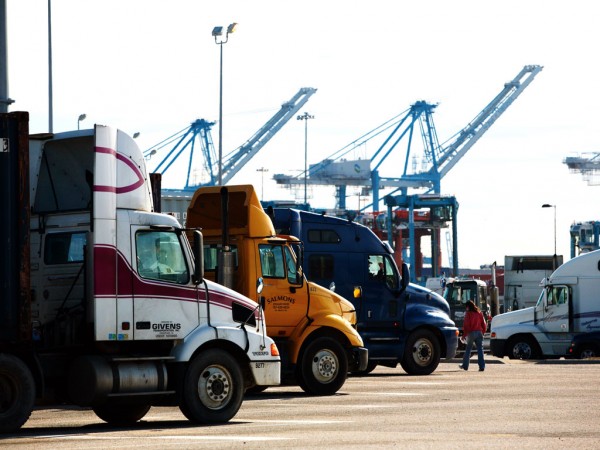Among the Virginia Port Authority’s greatest achievements over the past decade has been successful implementation of container-on-barge service linking Norfolk Harbor terminals with an inland facility in Richmond.
Indeed, the service, which routes containers along the James River instead of making a 100-mile truck trip using Interstate 64, is being expanded this year with addition of a second barge and plans to double the service frequency to daily.

“This year,” he said, “we will be adding a second barge and pushing its capacity even further.”
The second barge, slated to arrive by the end of March, will mean even more trucks can be taken off I-64. Reinhart said the barge routing already has shifted more than 250,000 trucks off Interstate highways over the past 10 years.
“Environmentally, that’s one engine pulling a barge that has 125 units on it, and it sails through the night and unloads and loads the next day at the other port,” he said.
The barge service, which has been backed by the America’s Marine Highway initiative of the U.S. Department of Transportation’s Maritime Administration, got its latest boost from MARAD last summer, with a $456,000 grant, which, along with a $114,000 VPA match, has facilitated purchase of a top-loader for the Richmond Marine Terminal.
Under a 40-year agreement inked in 2016, VPA assumed long-term management, operation and marketing of the Richmond terminal and has put a $4.2 million mobile harbor crane and other improvements in place.
Reinhart noted that shippers are building facilities proximate to the Richmond Marine Terminal as they aim to capitalize upon its benefits. They include a 500,000-square-foot distribution center for electronics and electrical equipment manufacturer Brother International Corp. and a facility for vacuum cleaner maker Bissell Inc.
Also on the inland facilities front, the VPA is adding three more tracks at its Norfolk Southern rail-served Virginia Inland Port in Front Royal, about 60 miles west of Washington and more than 200 miles northwest of Norfolk Harbor docks. That $27 million project, to bring the total number of VIP tracks to eight, is being backed by a $15.5 million grant awarded through the U.S. Department of Transportation’s Better Utilizing Investments to Leverage Development, or BUILD, program. Construction is to begin this year.
Shippers that have opened distribution centers in the Front Royal area to gain competitive advantages via VIP include The Home Depot Inc., Kohl’s Corp., Rite Aid Corp. and Red Bull.GmbH.




